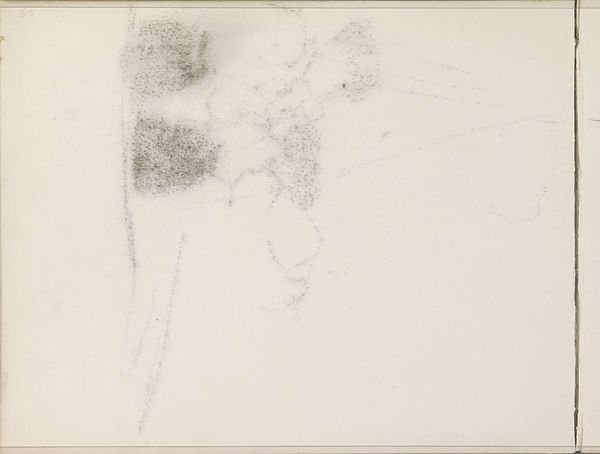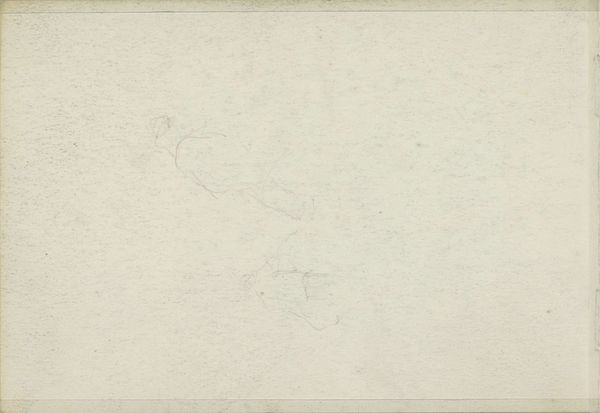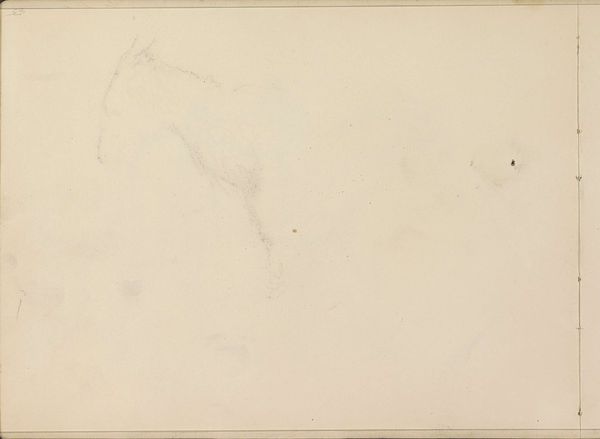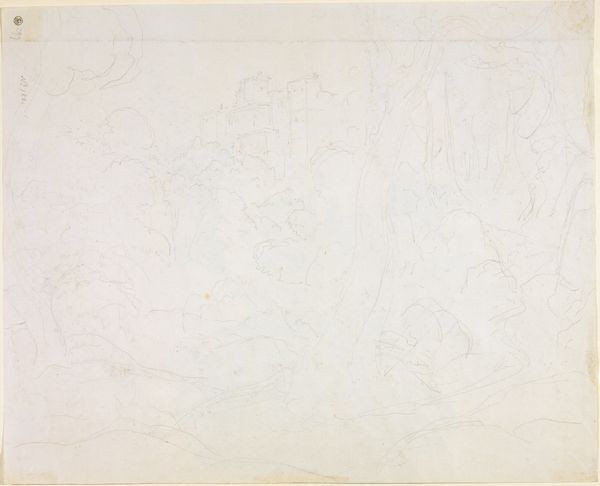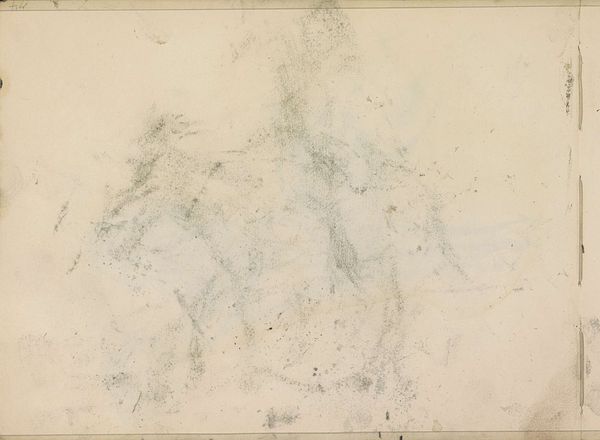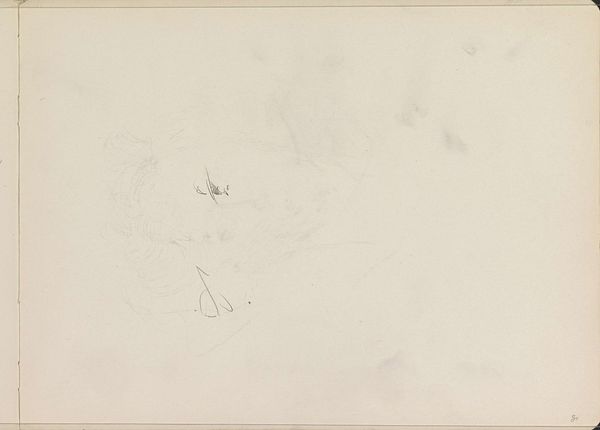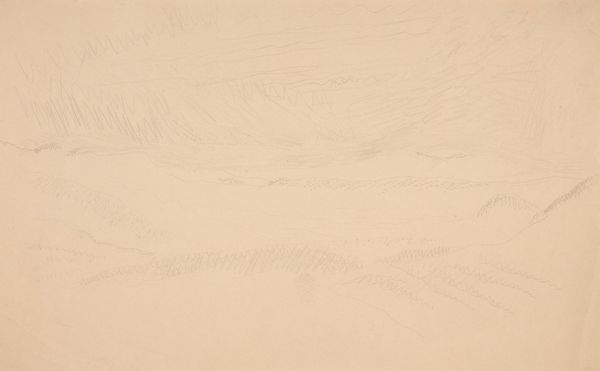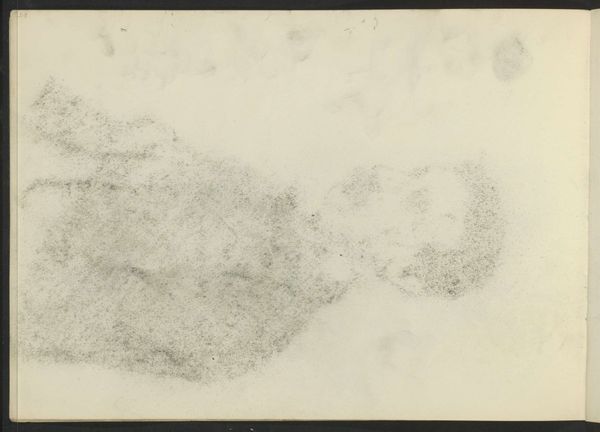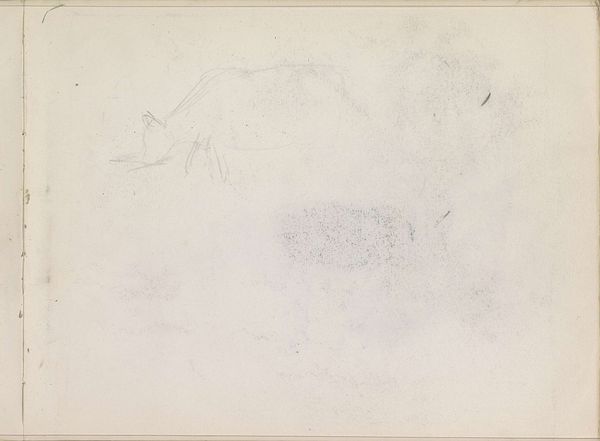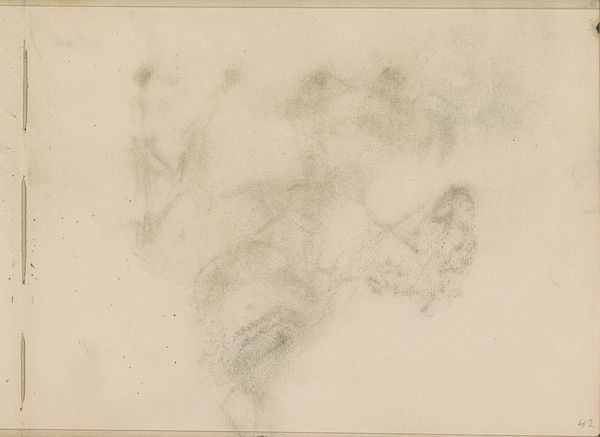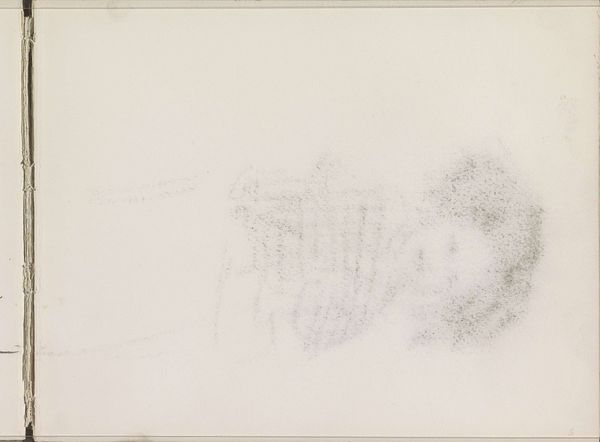
Copyright: Rijks Museum: Open Domain
Editor: This work is a pencil and paper drawing called "Abklatsch van de krijttekening op blad 39 verso," made by Isaac Israels sometime between 1890 and 1920. It looks like a landscape sketch, but it's very faint. What do you see in this piece? Curator: This ghost of an image invites a contemplation on memory itself. What is left when an image fades? The landscape appears barely formed, as though glimpsed through a mist or recalled from a dream. Does it evoke a specific place for you? Editor: Not really a specific place, no. It feels like the idea of a landscape, maybe a field or some hills. Curator: Consider how the "abklatsch"—the transfer or impression—acts as a copy of a copy. It becomes less about the subject and more about the process of image-making and transmission. It points us toward the layering of meaning that an image carries across time. We are seeing a shadow, not the original. Editor: So, the act of copying is important? It feels unfinished though, like it needs more. Curator: Perhaps the “unfinished” quality is precisely the point. It challenges the notion of a completed, definitive image. This challenges traditional symbols associated with idealized landscapes, offering instead an image of transient observation. Consider how our memories themselves shift over time, never truly complete or fixed. Editor: That’s interesting. It does make you think about how things change in your mind over the years. I initially thought there wasn't much to see but now it makes me consider how much an image can tell. Curator: Precisely. The ephemeral quality compels the viewer to consider the broader narratives surrounding perception and enduring memory.
Comments
No comments
Be the first to comment and join the conversation on the ultimate creative platform.
